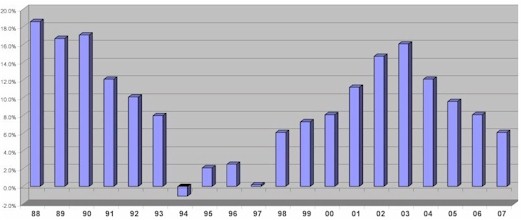Just Say No
By Kim Bellard, February 9, 2012
The recent flap over the recent Obama administration decision to not exempt religious organizations over rules requiring first dollar coverage of birth control leave me either bothered or bemused -- perhaps both.
The controversy has very little to do with health policy and very much to do with the 2012 elections. Moreover, it was entirely predictable, and it is amazing that the Administration walked right into what is becoming a big pie in its face. However, the outrage that Catholic and some other religious leaders are expressing over being required to cover birth control in their health plans ignores one important fact.
It’s not their money.
Employers of all stripes see their health plans as a big expense and as something they have both a right and an obligation to try to manage prudently. Acting as a prudent financial steward of the money, though, is not the same thing as imposing a particular religious belief. In this case, the objection is, of course, that birth control is against their religious beliefs, and so should not be something they should pay for. They’re not saying covering birth control is too expensive for their health plans or that it has adverse health consequences for people who use it. They don’t even seem to care that the health consequences of not using it can be worse for some people. They just don’t like it on moral grounds, and don’t want anyone using it.
The trouble is, the health plans are paid for by the employees’ money, not the employers’. Employee benefits are part of employee compensation. Employees have a decades-long implicit agreement with employers to receive a portion of their wages in benefits, mainly because they can receive that compensation on a tax-free basis. But it is no more the employers’ money than, say, the money employees put into their 401k plans.
I wonder how people would be reacting if the religious organizations were saying that their employees couldn’t spend any portion of their own salaries on birth control. I.e., they couldn’t take their wages and go off to buy birth control. Not just that they shouldn’t, but that they couldn’t, presumably under threat of losing their job. Would conservative politicians be rushing to support that kind of dictate? I don’t think so, or at least I hope not. People are pretty protective of their ability to spend their own money on the things they want. So why should employee wages that have been retained by the employer on a pre-tax basis to finance a health plan for those employees not be able to buy medical services and supplies that employees want or need, as long as that spending was legal and medically appropriate – which birth control is.
Let’s try an equivalent thought experiment. Let’s say the religion in question was Christian Science, and they decided that their “health plan” shouldn’t cover most hospital stays, physician visits, or prescription drugs. Or a plan offered by an employer whose owner is a Jehovah’s Witness, and accordingly rules out covering blood transfusions in the health plan. To make the experiment more equivalent, let’s be clear that their restrictions are not on plans offered by either church itself, but by organizations associated with those faiths and which employed many people who were of neither religion. We probably would look askance at those faith-based exceptions, but would they actually be different in kind?
We could go a step further. Maybe an employer isn’t satisfied just not covering abortion but also doesn’t want to include any health system or provider who provides birth control, and excludes them from their health plan network. Maybe another employer doesn’t want any health care provider with any religious affiliation whatsoever, and excludes any such providers. Or, to take an even more extreme example, maybe an employer doesn’t like the word “north” – for whatever reason -- and refuses to cover services by any provider with “north” in its name. Where do we draw the line at where an employer’s idiosyncratic beliefs should be allowed to dictate its health plan rules?
One can oppose the birth control rule on other reasons more related to health policy. You could argue, as I have and as John Cochrane did recently in the Wall Street Journal, that preventive services in general aren’t really insurance, and that covering them – particularly with no cost-sharing – is just dollar trading at best. You could also argue – again, as I have previously done -- that the tax preference for employer-based coverage distorts the consumer market in health insurance, and inevitably invites the kind of employer tinkering with benefits that has led us to the current birth control mess. You might also argue that birth control as preventive services stretches that term beyond its intended meaning – i.e., does it prevent disease or maintain health? All of those are fair game for serious health policy discussions, but those are not what is driving this particular debate.
There are lots of reasons both to dislike the rule and lots of reasons to protest the protests about the rule, but it seems inevitable to me that politics will win the day and the Obama Administration will be forced to backtrack in some way. And our crazy health system will be incrementally crazier as a result.
 2 Comments By
2 Comments By  Bellard, Kim |
Bellard, Kim |  Thursday, February 9, 2012 at 07:56PM tagged
Thursday, February 9, 2012 at 07:56PM tagged  Benefits & Premiums|
Benefits & Premiums|  Innovation, Reform & Regulatory
Innovation, Reform & Regulatory 

